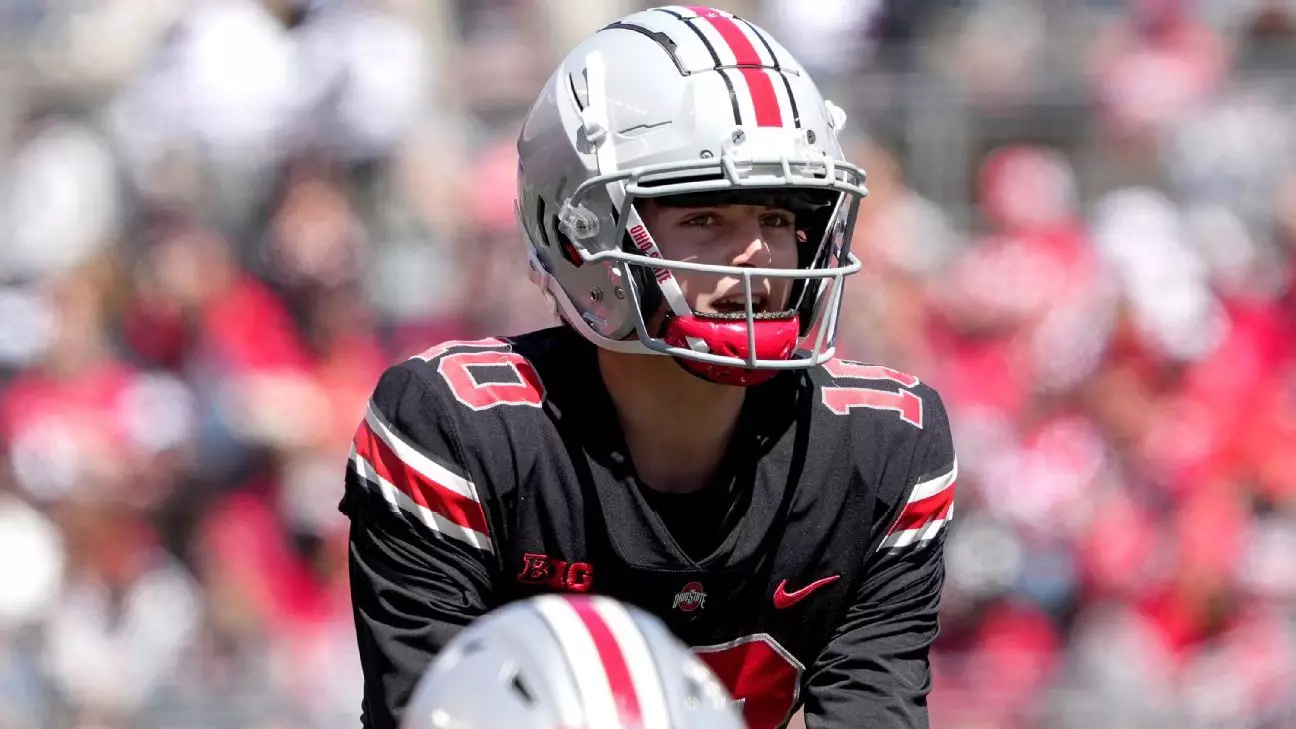Ohio State’s recent announcement to start Julian Sayin over Lincoln Kienholz sends a clear message about the program’s shifting priorities. While on the surface this appears as a strategic move rooted in recent performance, a deeper analysis raises questions about the transparency and logic behind such a decision. The narrative that Sayin “separated himself” through consistency seems compelling but perhaps overly simplistic given the complex nature of quarterback evaluations. What’s troubling is the way these decisions are framed—emphasizing fleeting weekly performances while potentially overlooking the long-term development and potential of players like Kienholz.
It’s reasonable to expect that a talented player like Kienholz, who showcased athleticism and resilience in previous competitions, deserves more substantial consideration. The choice to favor consistency over raw talent could reflect a conservative approach, but it also risks undervaluing the evolving athletic skill sets that modern offenses increasingly rely upon. The issue here isn’t just about who performs better in practice but understanding how a player’s growth trajectory aligns with the team’s broader strategic vision. This decision, while seemingly pragmatic, might inadvertently stifle Kienholz’s long-term potential, especially when immediate results are prioritized over future development.
The Implications of a Short-Term Focus
By placing Sayin at the forefront for the season opener against Texas, Ohio State seems to lean into a win-now mentality. However, this approach could backfire if it undermines the broader goal of building a resilient, adaptable quarterback room. The reality is that the college football landscape is changing rapidly, with quarterbacks now expected to excel not only in traditional passing but also in mobility and improvisation. Kienholz’s athletic prowess and potential for growth could be invaluable in this environment, yet those qualities aren’t prioritized in the short-term decision-making process.
The decision also raises concerns about the coaching staff’s ability to foster confidence in their backups. Kienholz, despite not having played since the Cotton Bowl, appears to be in a good mental space, which suggests that Ohio State might be undervaluing the importance of psychological resilience. The real risk lies in prematurely sealing off future options and signaling to the team that only immediate performance counts, potentially hampering long-term team cohesion and development. It’s a narrative that reflects a broader tendency in competitive sports to favor the perceived “sure thing” over patience and trust in the process.
A Broader Reflection on Leadership and Strategy
In a broader context, Ohio State’s decision exemplifies some of the pitfalls in college athletics — an overemphasis on short-term results often at the expense of strategic planning. College football has become increasingly centered on immediate gratification, with coaching staffs under pressure to deliver quick wins, sometimes neglecting the importance of nurturing talent for sustained success. In this light, the choice to elevate Sayin might be less about actual readiness and more about appeasing the fan base or fulfilling an immediate obligation.
This approach also speaks to a larger philosophical debate within center-wing liberalism about balancing innovation with tradition. Ohio State’s coaching decision reflects a cautious conservatism—favoring what is known over what could be. The problem is that such conservatism can inhibit the kind of bold, innovative coaching that is vital in today’s competitive landscape. Instead of fostering a culture of growth and experimentation, the program risks becoming prisoner to short-term metrics of success, potentially undermining its long-term ambitions.
Ohio State’s quarterback decision reveals much about the broader challenges facing college football programs—navigating the tension between immediate results and long-term development. Whether this choice will serve the team well remains to be seen, but it unquestionably highlights the ongoing struggle within sports leadership: balancing confidence, consistency, and strategic patience amidst relentless pressure for success.


Leave a Reply